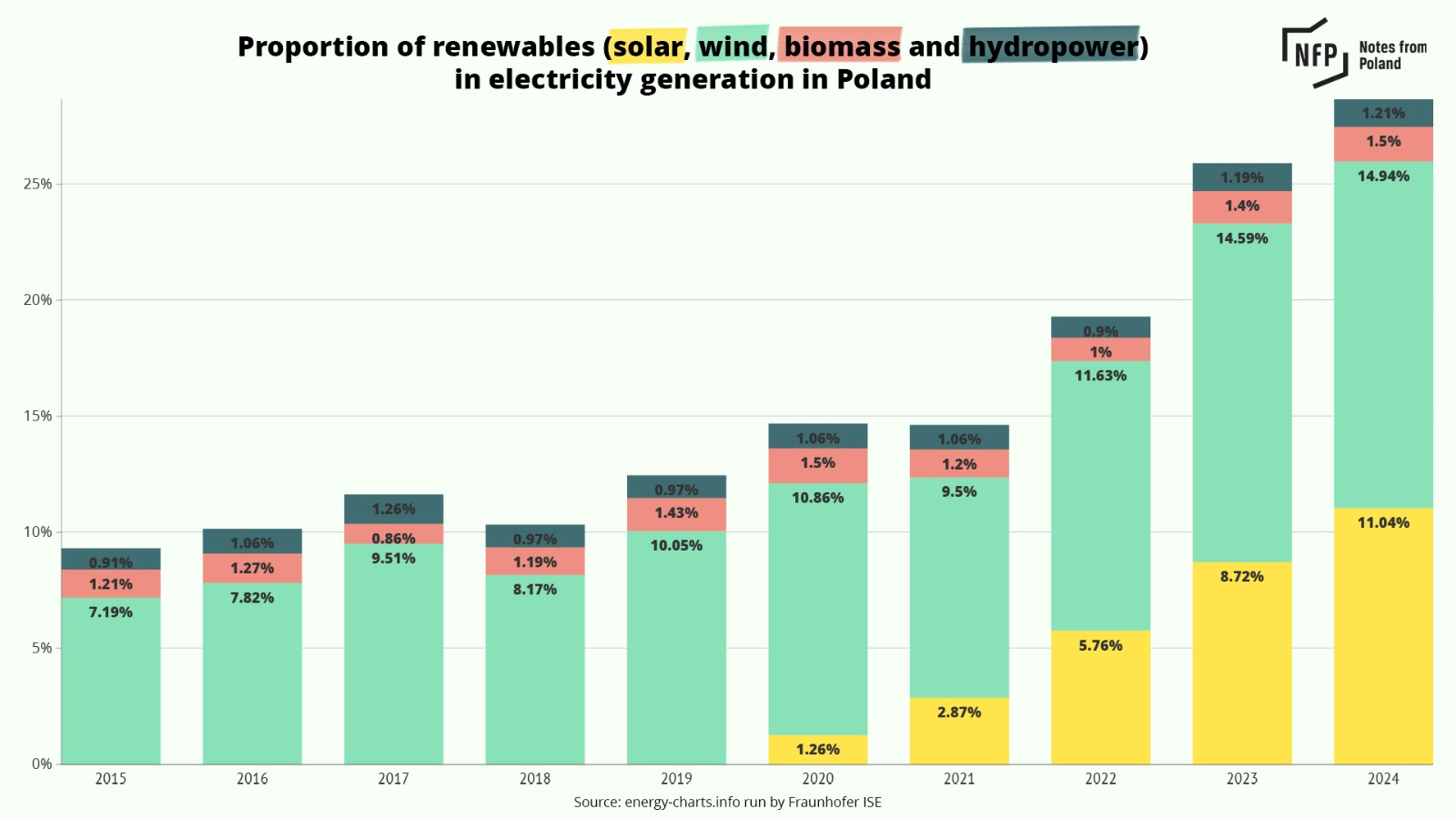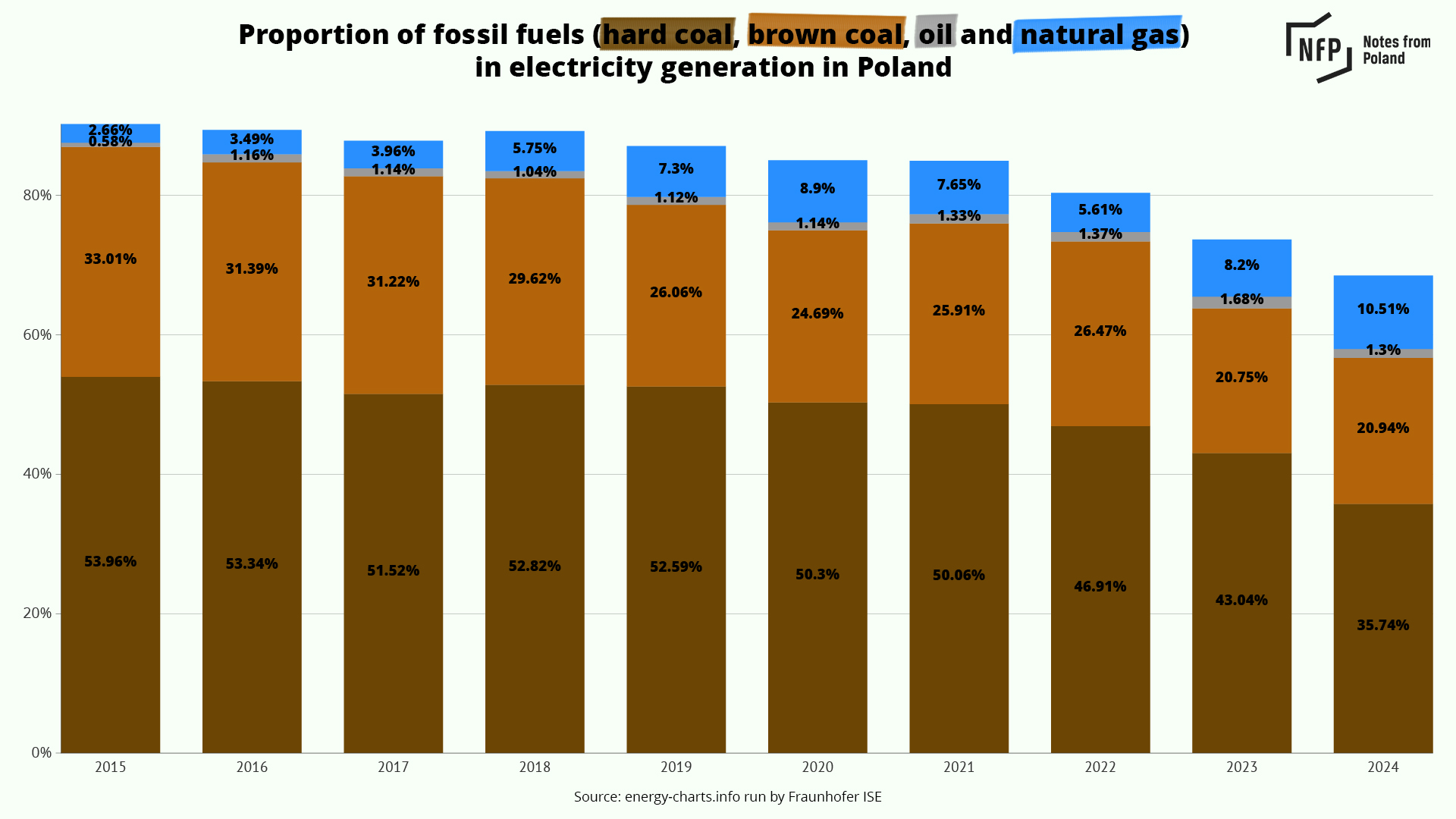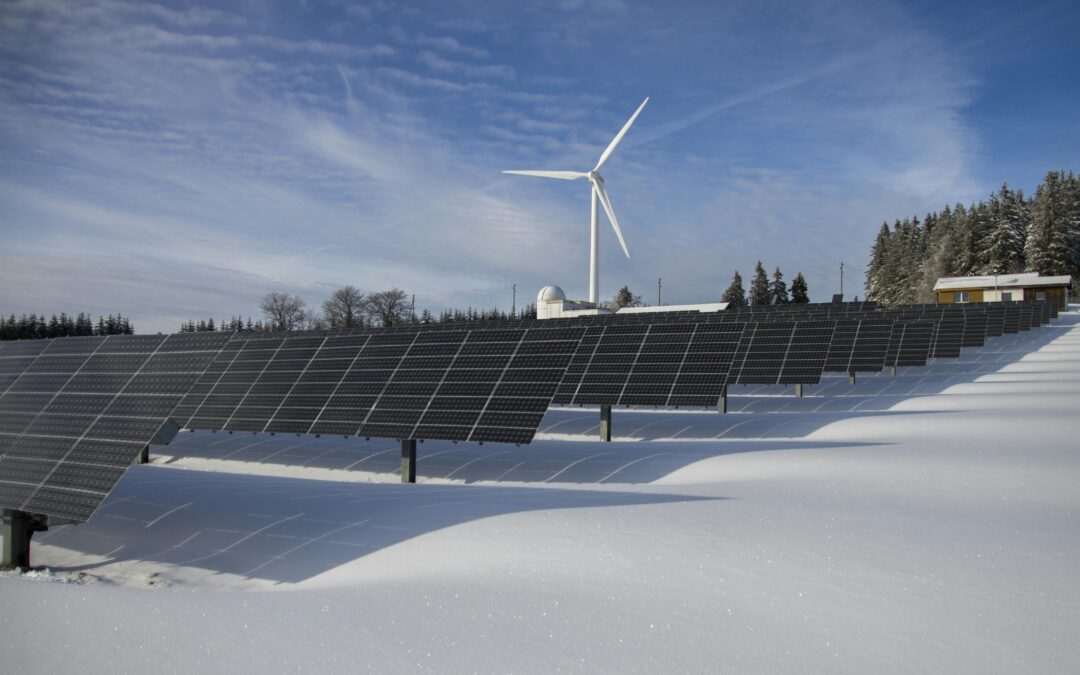Keep our news free from ads and paywalls by making a donation to support our work!

Notes from Poland is run by a small editorial team and is published by an independent, non-profit foundation that is funded through donations from our readers. We cannot do what we do without your support.
Poland generated a record 28.8% of its electricity from renewables in 2024, up from 26% the previous year. Despite this growth, coal continues to be the primary source of electricity, accounting for almost 57% of Poland’s energy mix last year, the highest proportion in the European Union.
Figures from the Fraunhofer Society, a German research organisation, show that Poland generated 45.2 TWh of electricity from renewables in 2024. Onshore wind led the way, contributing 23.48 TWh, or 14.9% of the country’s electricity output.
Solar power followed, generating 17.34 TWh (11%), with biomass (2.36 TWh, 1.5%) and hydropower (1.91 TWh, 1.2%) making smaller contributions.

While the share of renewables has risen, experts have criticised the government for not delivering on its pledge to accelerate Poland’s energy transition.
The growth in renewables of 2.8 percentage points in 2024 was much lower than the record 6.7 percentage-point rise in 2023. Solar energy led the growth among renewable sources, expanding by 2.34 percentage points last year as a proportion of Poland’s electricity output.
Meanwhile, coal accounted for 56.7% of Poland’s power production last year, down from 63.8% in 2023. Hard coal generated 56.16 TWh (35.7%), while lignite, or brown coal, contributed 32.9 TWh (20.9%). Natural gas and oil produced 16.51 TWh (10.5%) and 2.04 TWh (1.3%) respectively.
The share of lignite remained roughly stable, with a marginal increase of 0.19 percentage points. Hard coal’s share, meanwhile, dropped sharply by 7.3 percentage points – the largest decline recorded since the Fraunhofer Society began tracking data in 2015.

Poland remains the European Union’s most coal-dependent country and the only member state without a coal phase-out date. However, the country has intensified efforts to reduce reliance on fossil fuels following Russia’s invasion of Ukraine and the ensuing energy crisis.
Between 2021 and 2024, installed wind capacity rose from 7.95 GW to 10.30 GW and solar capacity from 6.66 GW to 17.31 GW.
In 2022, Poland installed the third-highest amount of new solar power capacity in the EU. During that year, the amount of electricity provided by renewable so-called micro-installations – mainly solar panels – doubled, thanks in large part to a popular state subsidy scheme introduced under the former government.
Renewable energy micro-installations contributed over twice as much power to Poland's electricity network last year as in 2021.
The majority of that came from home solar installations, which have boomed thanks to a state subsidy schemehttps://t.co/1ZRcy65gyZ
— Notes from Poland 🇵🇱 (@notesfrompoland) March 21, 2023
In December 2023, a coalition government led by Prime Minister Donald Tusk took office, promising to accelerate the energy transition. However, experts say little progress has been made in the first year.
“Before the elections, we heard that the parties in the current coalition agreed on the need for an ambitious transformation,” Michał Hetmańki, head of the Instrat think tank, told news website Gazeta.pl. “And now we see a lack of plans and ideas.”
Tusk’s government has, however, continued to move ahead with its predecessor’s plans to create Poland’s first nuclear power stations. However, the first reactor is not anticipated to be in operation until 2035.
Poland’s government intends to spend over 60 billion zloty (€14 billion) between 2025 and 2030 on developing the country’s first nuclear power plant.
That will cover an estimated 30% of the total costs, with the remainder coming from foreign borrowing https://t.co/1PKe7zoobd
— Notes from Poland 🇵🇱 (@notesfrompoland) September 5, 2024

Notes from Poland is run by a small editorial team and published by an independent, non-profit foundation that is funded through donations from our readers. We cannot do what we do without your support.
Main image credit: Pixabay / Pexels

Alicja Ptak is deputy editor-in-chief of Notes from Poland and a multimedia journalist. She has written for Clean Energy Wire and The Times, and she hosts her own podcast, The Warsaw Wire, on Poland’s economy and energy sector. She previously worked for Reuters.



















